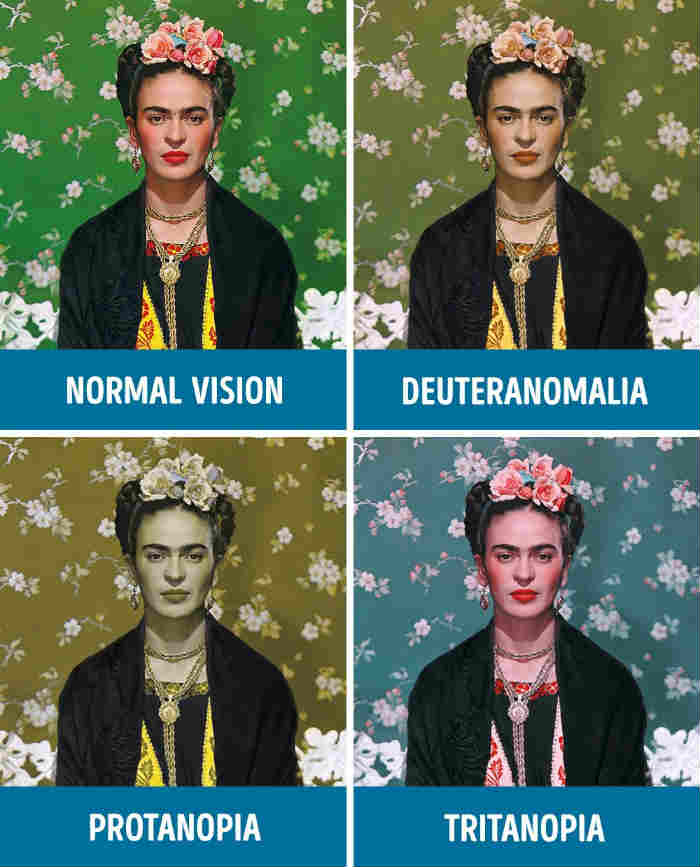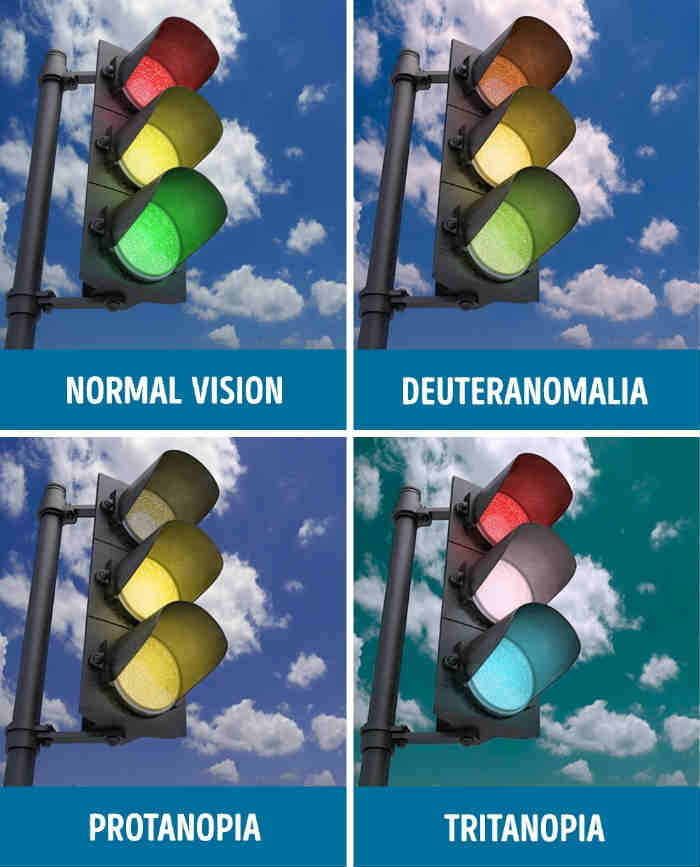Have you ever taken a color vision test? These tests help identify color vision deficiency, a mostly inherited condition that affects the ability to distinguish specific colors. If you have this deficiency, you might struggle to differentiate between certain colors. There are four primary types of color blindness!
Try reading these eight words to check if you have a color vision deficiency. Only those with flawless color vision and no color blindness should read them without difficulty. Answers are at the end.
Can you see the blue word?

Individuals with color blindness often have trouble distinguishing blue from other shades, but blue itself is usually perceptible. Blue detection relies on different eye receptors than red and green, making it a stable reference for people with color vision deficiencies.
Can you see the green word?

Some people with color vision deficiencies can see green accurately but have issues with other colors. Given green’s frequent use of signals and nature, colorblind individuals develop strategies to interpret it through context and visual clues.
Can you see the purple word?

For those with red-green color blindness, purple can appear as blue or red, depending on the deficiency. Those with blue-yellow color blindness may miss the red component, making purple seem more blue. Context often helps colorblind individuals identify purple despite some perception differences.
Can you see the pink word?

Pink may appear closer to gray for some, especially if it’s hard to distinguish from red. However, distinct contexts like clothing or signage help colorblind people identify pink, using brightness and surrounding colors to navigate its presence.
Can you see the blue word?

Blue often acts as a reference for people with color vision deficiency, especially those with red-green color blindness, who typically perceive blue accurately due to its unique receptor pathways.
Can you see the orange word?

Orange can resemble yellow or red for certain colorblind individuals, given the overlap with red and yellow receptors. Contextual cues like brightness often help colorblind people recognize oranges in essential situations like traffic signs or fruit.
Can you see the purple word?

Red and blue receptors work differently in colorblind individuals, affecting purple perception. Red-green colorblind individuals may find purple looks more like blue or red, depending on their specific type of deficiency.
Can you see the red word?

Red may appear darker or similar to brown or green for those with red-green color blindness, complicating daily tasks like interpreting signals or spotting ripe fruit. Contextual strategies help individuals identify red despite these challenges.
Answers:
TREE, EAT, BOOT, SWEET, PARK, LOVE, HAT, BEAD.
If you read all the words easily, you likely don’t have one of the four types of color blindness. Perspective shapes how we see the world—not only in opinions but also in literal vision differences.
Types of Color Blindness

Color blindness, or color vision deficiency (CVD), affects around 8% of men and 0.5% of women. There are four main types of color blindness, each impacting how people perceive colors.
Total Color Blindness

True color blindness, where vision is limited to shades of gray, is extremely rare, affecting only about 0.00003% of people.
Deuteranomaly

The most common form affects about 4.63% of men. Reds and greens appear faded or dull, lacking their natural brightness.
Protanopia

Affects about 1% of men. Reds and greens lack vibrancy, while yellows and blues often remain unchanged, creating a higher contrast.
Tritanopia

Rare and affects men and women equally. Individuals with this deficiency view the world in tones of pink and green.
Colorblind Comparisons

Recognizing different visual perceptions helps us build a more inclusive world, where unique perspectives are valued, fostering compassion and harmony.
